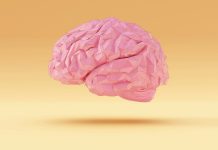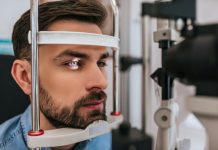
One in 10 people age 65 and older (10%) has Alzheimer’s dementia and 13.8 million people in the U.S. age 65 and older are projected to have Alzheimer’s dementia by 2050, according to the Alzheimer’s Association.
The olfactory system, or sense of smell, is known to be dysfunctional in the early stages of Alzheimer’s and Parkinson’s disease.
It is also shown that proper olfactory function can play a key role in regaining consciousness after brain injuries.
In a recent study at the University of Otago and elsewhere, researchers found that stimulating humans’ sense of smell may help prevent conditions such as Alzheimer’s Disease.
The finding is published in Frontiers in Neuroscience. One author is Associate Professor Yusuf Ozgur Cakmak.
In the study, the team developed a means of delivering electrical stimulation to the olfactory region in a non-invasive fashion and in a way that is simpler, easier, and less cumbersome.
They built a wearable concept prototype, similar to Google-glasses, which produces small electronic pulses on the skin to stimulate the olfactory nervous system.
Areas of the brain prone to Alzheimer’s, Parkinson’s, and coma, can be jump-started to reduce or reverse the onset of those serious conditions.
The team says promising early results pave the way for developing the world’s first non-invasive, wearable electrical stimulation system to target the olfactory regions.
Applying the treatment via a headset on a hair-free zone that can be worn in a daily routine instead of more invasive treatments makes this method unique.
The multiple electrode configurations have been tested with the aid of electrical field modeling that is validated with direct human brain recordings during brain surgery.
The team will be testing its wearable stimulator in a clinical trial soon.
They hope this method will help stimulate these networks to alleviate symptoms or suppress the progression of Alzheimer’s disease to Dementia.
It also has the potential to help coma recovery and Parkinson’s disease.
Copyright © 2021 Knowridge Science Report. All rights reserved.



